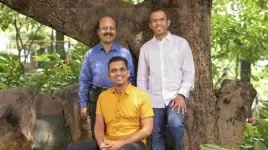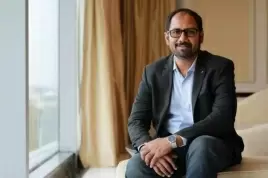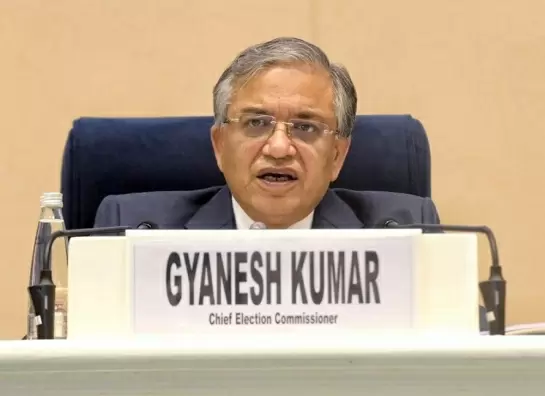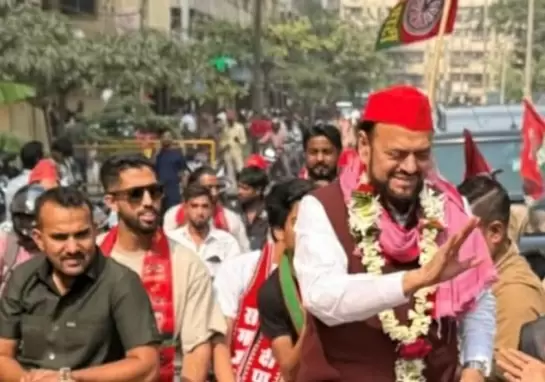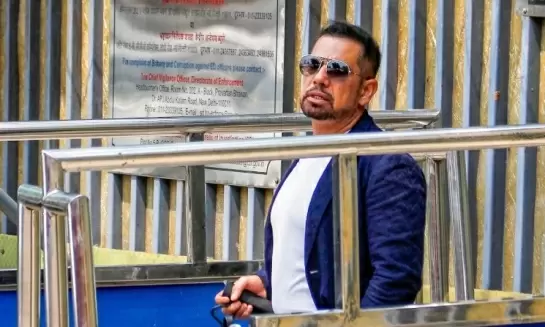No one cares about the welfare of internal migrant labourers
26-January-2012
Vol 3 | Issue 4
Rajiv Khandelwal is the founder and director of Aajeevika Bureau, a specialised public initiative based in Udaipur that provides services to thousands of migrant workers from impoverished rural areas who enter urban labour markets for seasonal employment.
Aajeevika Bureau is an attempt to address the problems associated with exhaustion of rural resources and the inevitability of migration among rural youth.
Khandelwal’s team at the Bureau has designed a number of innovative solutions for migrants, including registration and photo ID services, vocational training, employment counselling, legal aid, financial services, and destination support.
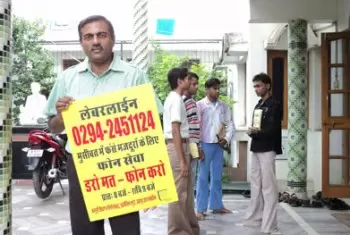 |
|
Rajiv Khandelwal suggests a possible course of civil society action and state policy for migrant workers
|
The Bureau also actively seeks to influence policy around rural migration and has presented strong alternatives to the government, donors and research agencies.
Aajeevika Bureau’s work has been picked up by a number of organisations in high-migration states like Rajasthan, Uttar Pradesh, Orissa, Bihar and Maharashtra.
In this interview, Khandelwal explains what India’s growth story means for internal migrants who have both fuelled and fed off the country’s development. He suggests a possible course of civil society action and state policy for this large, growing, yet overlooked segment of our population.
What implications does the India growth story have for internal migration?
The truth is that India’s growth story is essentially fuelled by internal migration, and India will grow as internal migration increases. They both fuel and feed off each other.
A lot of the benefits of growth, however, actually skip large sections of migrant workers. They may be contributing significantly to high-growth industry and services, but the returns for them continue to be low.
Wages in our country are among the lowest anywhere in the world and that does not look likely to change anytime soon. India’s economic growth, in fact, is a success story because of unbridled distress migration by the country’s poor.
How have the state, markets and civil society shaped the discourse on internal migration?
I would say that migrant workers are neglected by all three major columns of society.
The state has largely ignored migrant workers, mainly because it perceives internal migration, or the relentless shift of people from villages to cities, as a problem. In fact, a lot of the state’s programmes are driven by the agenda to keep people in villages.
The National Rural Employment Guarantee Scheme, for example, is built around the need to help people find local employment. Little is said about the fact that the NREGS does not fully answer people’s need to migrate.
NGOs have divided their work into rural, urban, farmers, artisans, women, children, and so on. Very few NGOs actually define migrant workers as a segment requiring attention. NGOs’ work with unorganised sector workers in the labour market is actually very limited.
Even NGOs based in urban areas that receive large waves of migrant workers barely recognise these groups as candidates for support -- they are seen as mobile or unavailable. Large trade unions too have left out unorganised sector workers because they are difficult to bring together and mobilise and do not represent significant political gains for them.
Large corporations and the urban industrial economy, I think, are enjoying the benefits of this neglect of migrant workers. In the scenario of deregulation and lax labour laws, they reap the dubious and short-term benefits of a casual and informal workforce.
On whom does the onus lie to ensure that internal migrant workers are not excluded from policy responses and protective measures?
I think the onus has to mainly lie with the state. There is a strong argument, and I agree with it, that in the case of workers in the informal economy, where the relationship between employer and worker is not very clearly established, the state should be seen as the principal employer. It is the state’s responsibility that workers in the informal economy are protected and given services and social security benefits.
With increasing numbers of migrant workers, I also see a significant role for trade unions and NGOs. Large numbers of rural people now live in cities, even if seasonally.
India will be poor in its cities, not just in its rural areas anymore. The focus of civil society attention has to start shifting similarly. They have to start seeing migrants as major candidates for services, support and advocacy.
When we talk of the role of NGOs and trade unions, are there any concrete examples or interventions on their part?
In the case of interventions by NGOs and civil society, I am happy to say that attention is now growing. Our organisation, Aajeevika Bureau, for instance, has specifically focused on issues of migrant workers.
We have worked both at the ‘source’, in Rajasthan, and at the ‘destination’, in Gujarat. We also work and collaborate with a number of organisations across the country in high-migration settings and help them in their programmes for migrant groups.
These organisations work in high-migration corridors like Orissa to Andhra Pradesh and Kerala, Bihar and Uttar Pradesh to Mumbai, and corridors within Rajasthan, Maharashtra and Gujarat.
The number of organisations is steadily increasing, although it is nowhere close to the scale of the problem. I would say that there is a need to see more trade union involvement in this sector and new forms of trade union activity among migrant workers in some of the sectors that I mentioned earlier. I think that aspect still remains poorly covered.
We have the Inter-State Migrant Workmen Act (ISMW Act). What has its implementation been like?
The ISMW Act is an obsolete piece of legislation. It was drafted in the mid-’70s and in the very specific context of inter-state movement of labour. It largely governs contractors and attempts to bring them under some kind of regulation, which is desirable.
But there are several facets of internal migration that have opened up since then, which the ISMW Act does not even consider. If anything, there is a need to re-draft the legislation itself and bring some specific industries within its ambit -- especially industries that are known to hire unskilled, vulnerable, migrant groups.
This would include industries like construction, head-loading, low-end retail, manufacturing, hospitality and brick-kiln work. Trade unions, NGOs, workers’ organisations and the government need to come together to push for new legislation for migrant workers.
We’ve now gathered that the primary response should come from the state. But the interventions that we’ve seen so far have been coming largely from civil society. How scaleable do you think their interventions are? And what is their ability to influence state responses and policies, and change the current discourse on migration?
Some of the work that civil society is doing -- for instance the move to issue migrants an ID, provide them with skills training, offer legal protection, and financial services -- is highly scaleable.
They are not unique to a specific geography; they are fairly universal solutions that can be taken to any geography and any group of migrants across the country. Of course, civil society is limited by its resources, its networks and its ability to deliver.
Therefore, it can partner well with governments to deliver these services. I think that the replicability is in the content. How it should be done, how we roll it out now over a larger area with a greater number of groups is a matter of state definition.
The state can work closely with civil society towards that end. I would come back to the need to show working models in these corridors. It will also bring some inter-state coordination to the front. It will show how the governments of Orissa, Gujarat, Rajasthan and Maharashtra can work together, and how organisations across these geographies can work together. Unless that coordination is cracked, between source and destination, we will not be able to scale up services significantly.
Secondly, a lot of investment is coming into urban infrastructural improvement and improvement of urban services. These services can start looking at the presence of large populations that are present seasonally, not permanently. Services can be designed around the presence of temporary workers, which is another potential for scale because a lot of investment is now happening in urban areas.
The discourse will be changed by practice, not purely by research. A combination of research and practice will change the discourse. The fact that there are national symposiums, conferences, debates and inquiries around the issue of internal migration shows that some effect is already taking place.
There is a fair bit of recognition of the success that is happening in pockets of the country, wherever work with migrants is taking place. The discourse will obviously change when the state adopts it wholesale and accepts it as its development agenda.
This will take some time, but the fact that civil society is contributing to working functioning models on the ground will be the tipping point for the discourse, not just research or policy analysis. - Infochange News & Features





